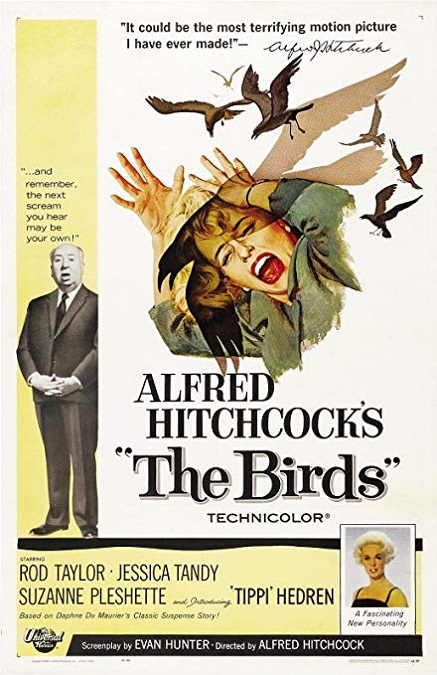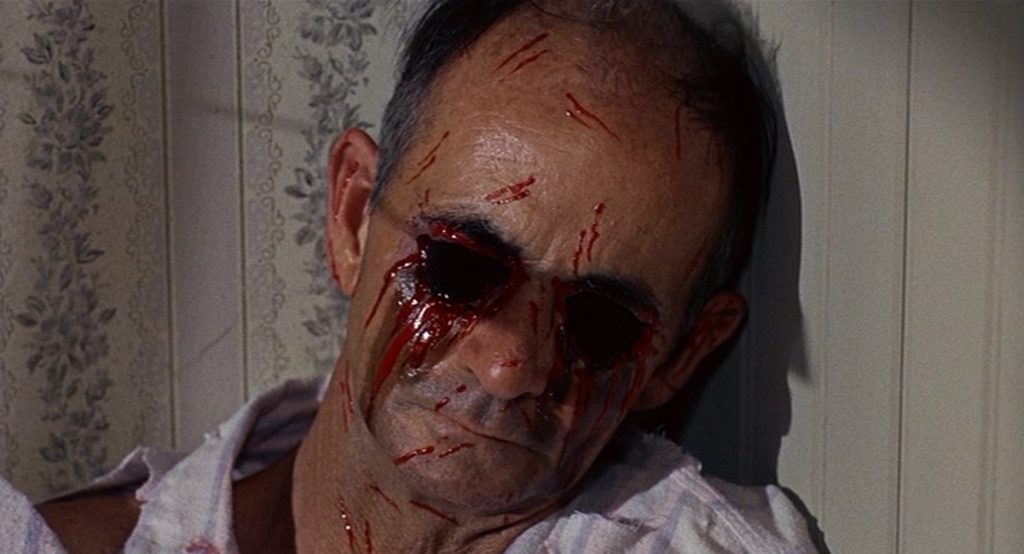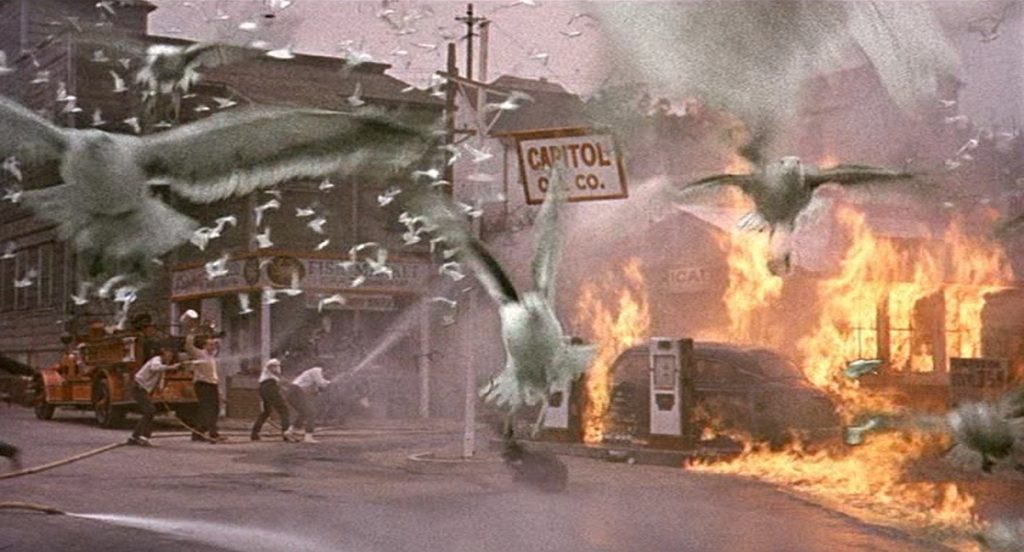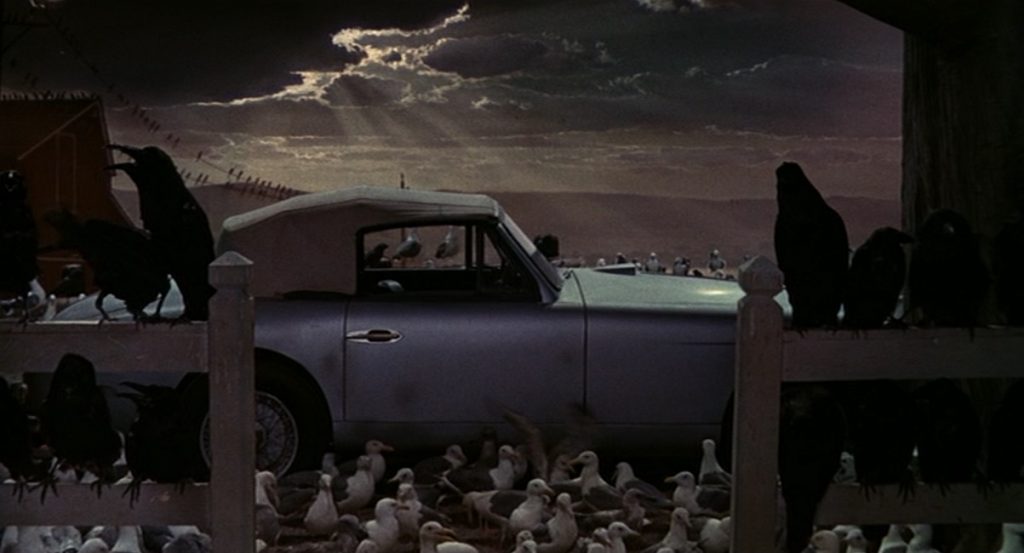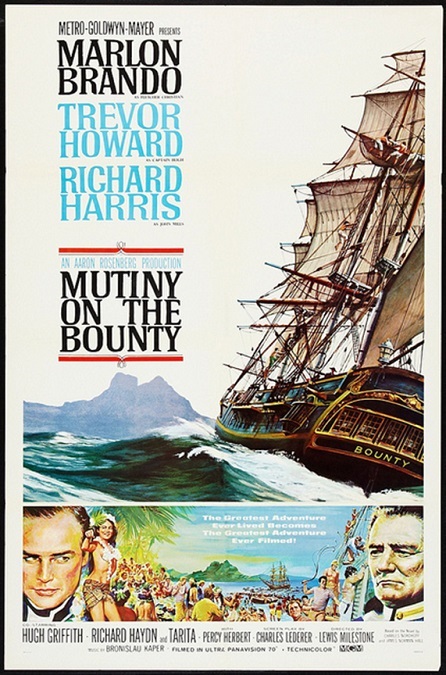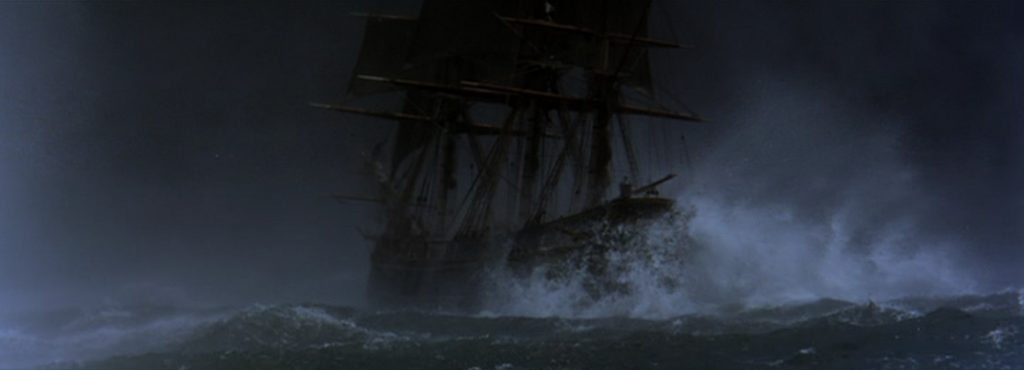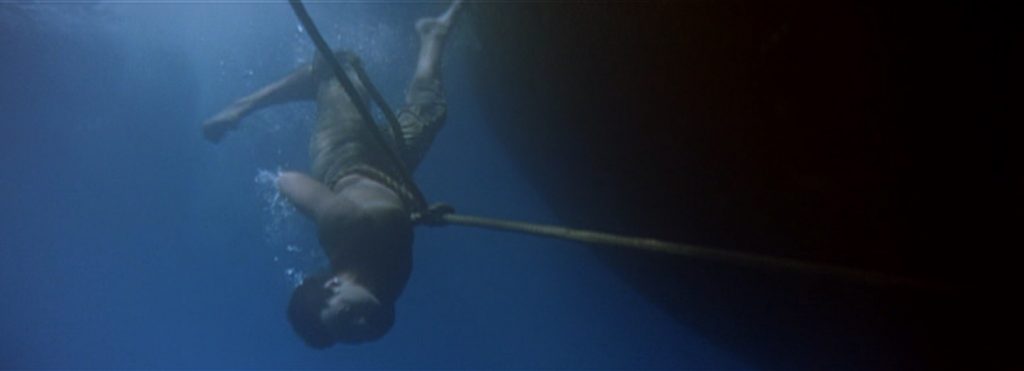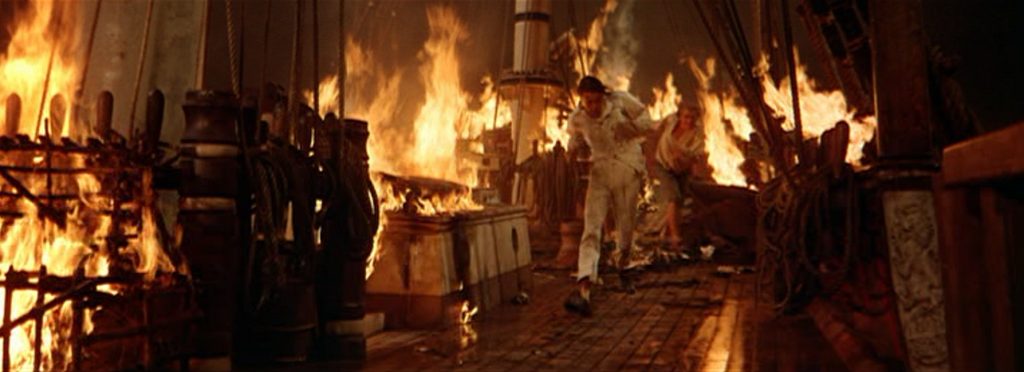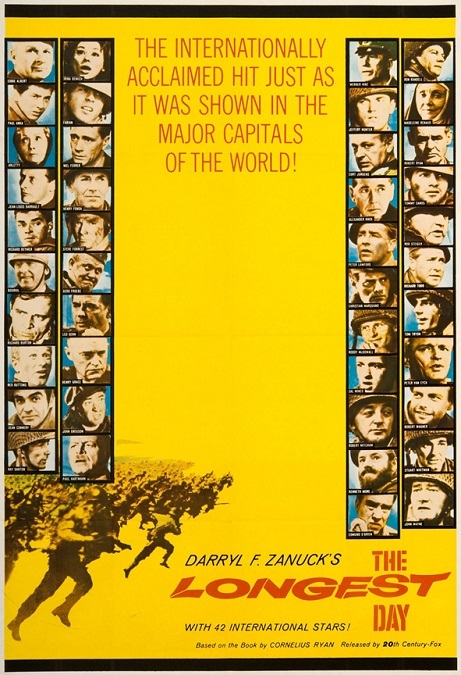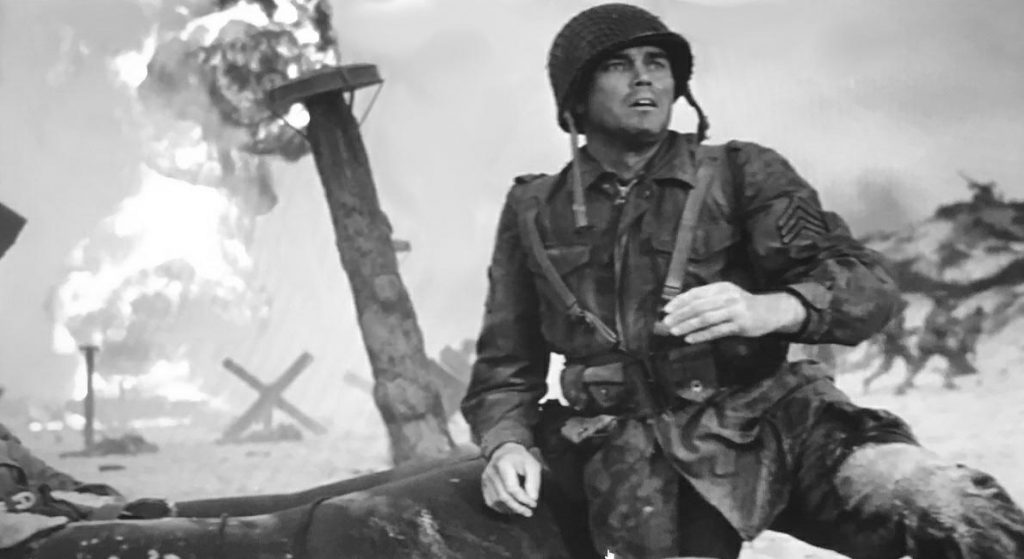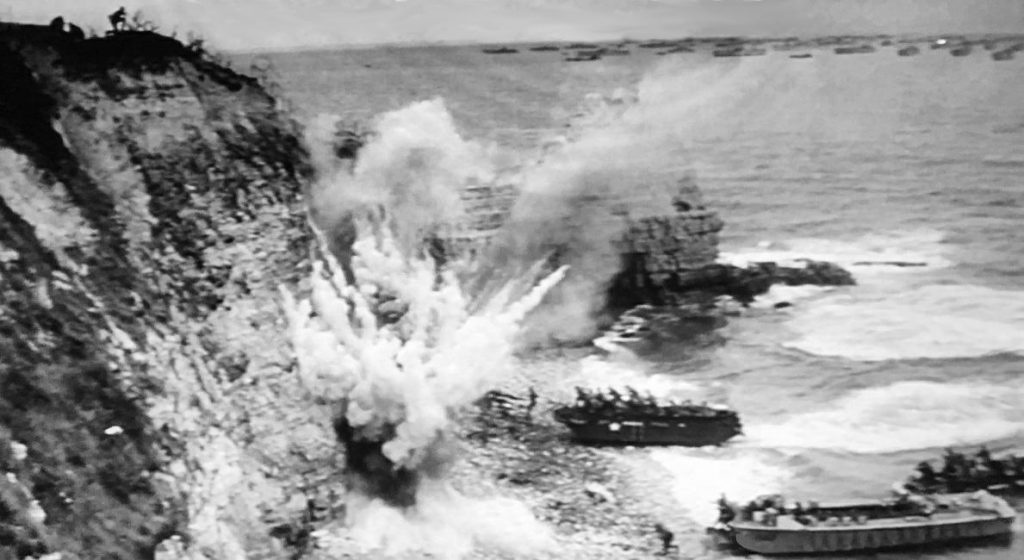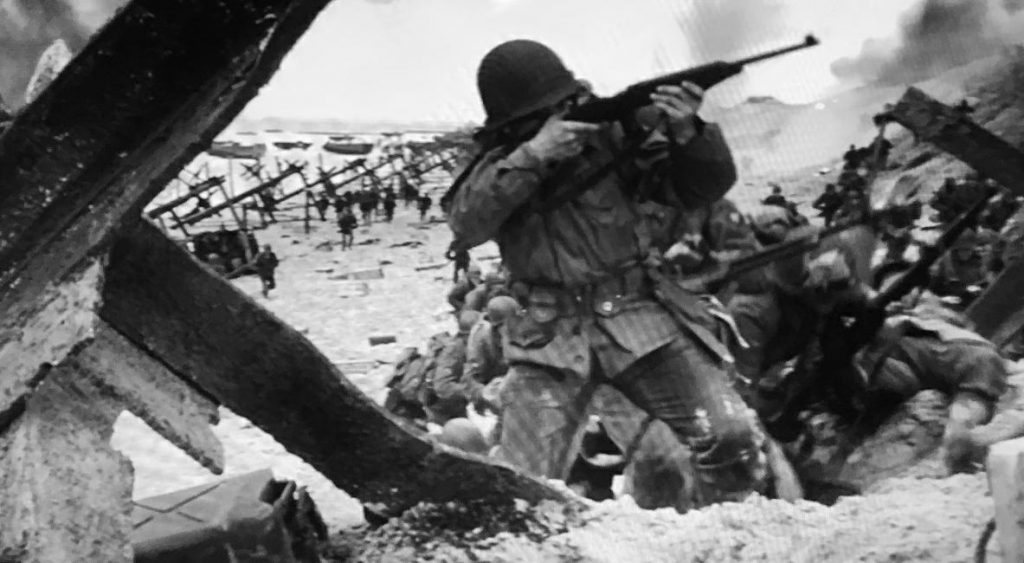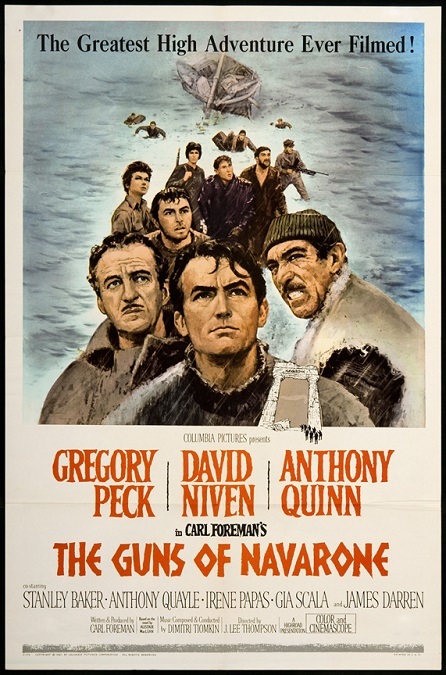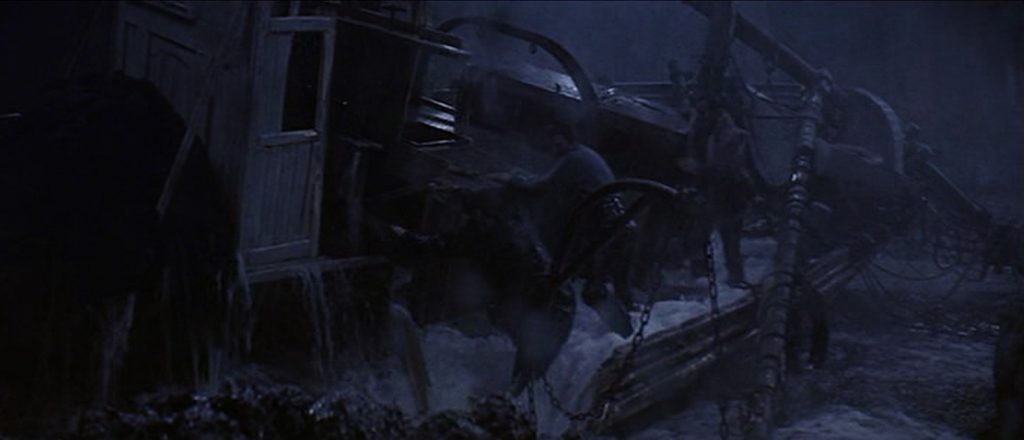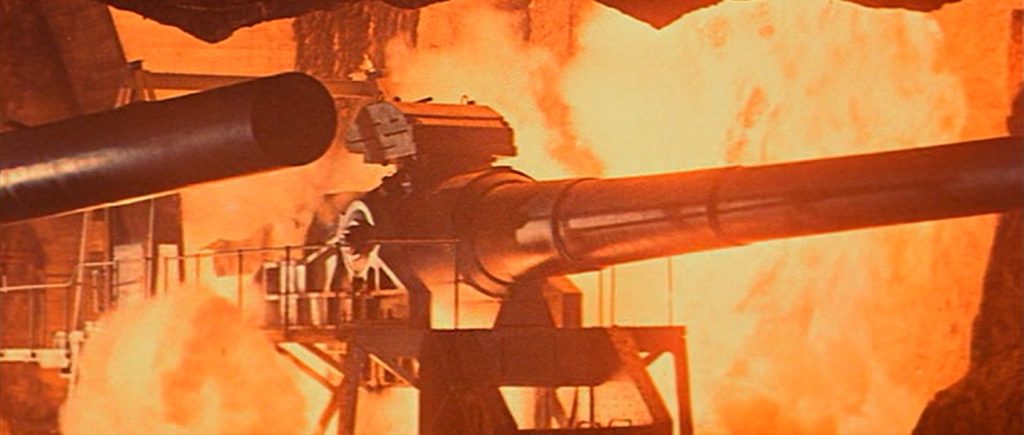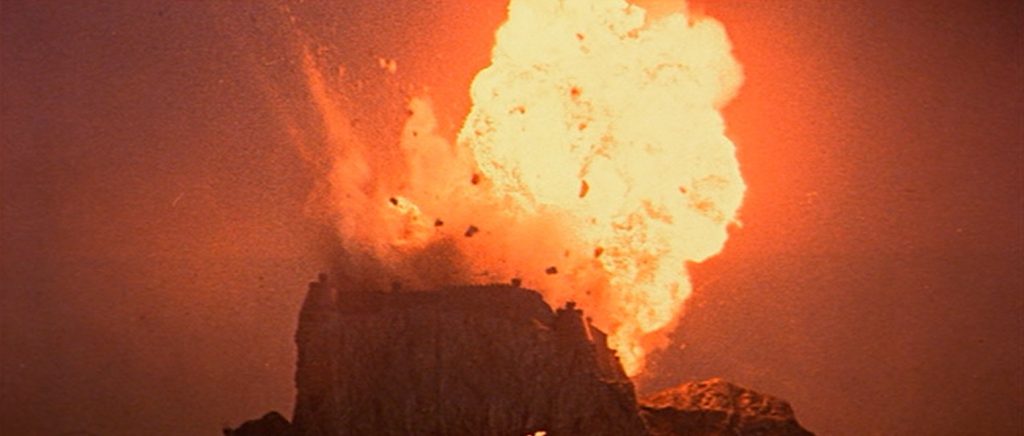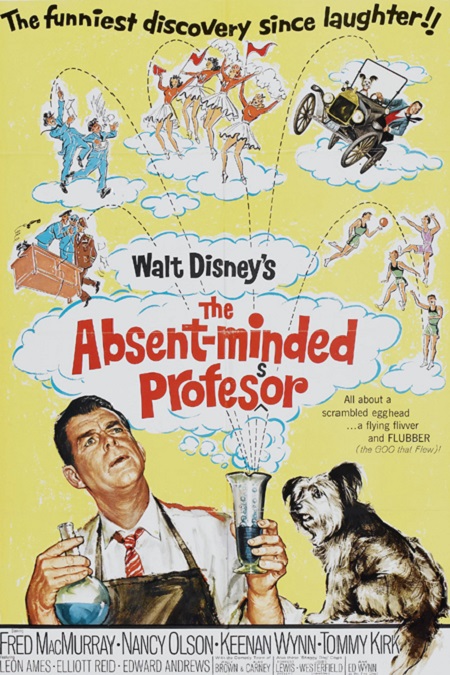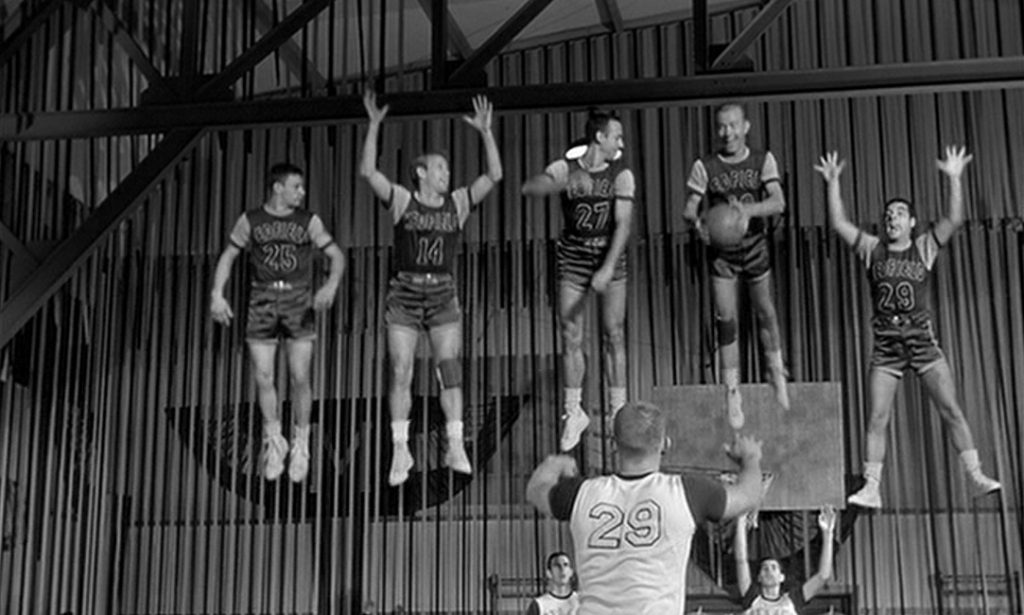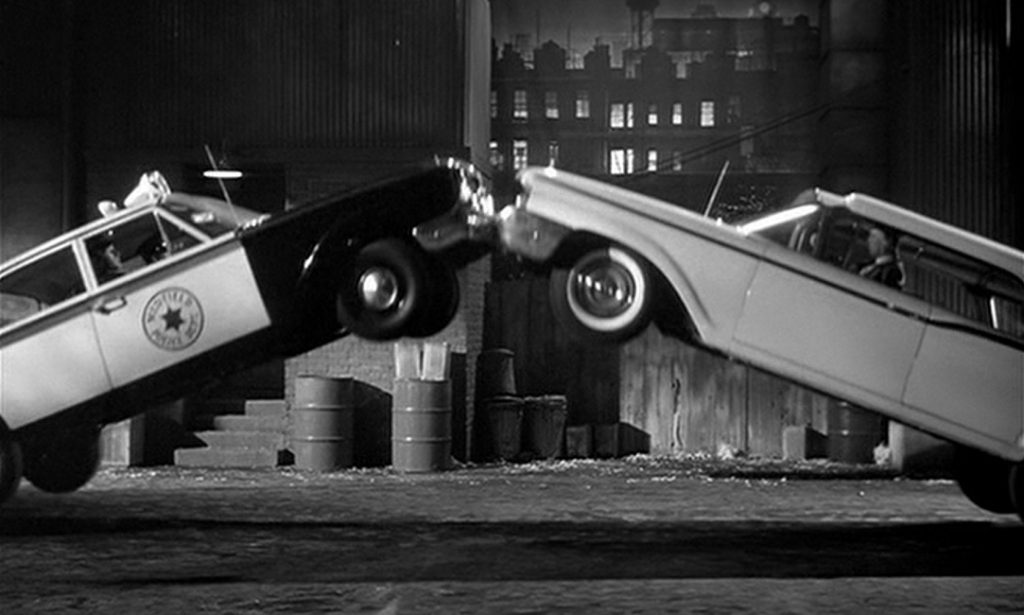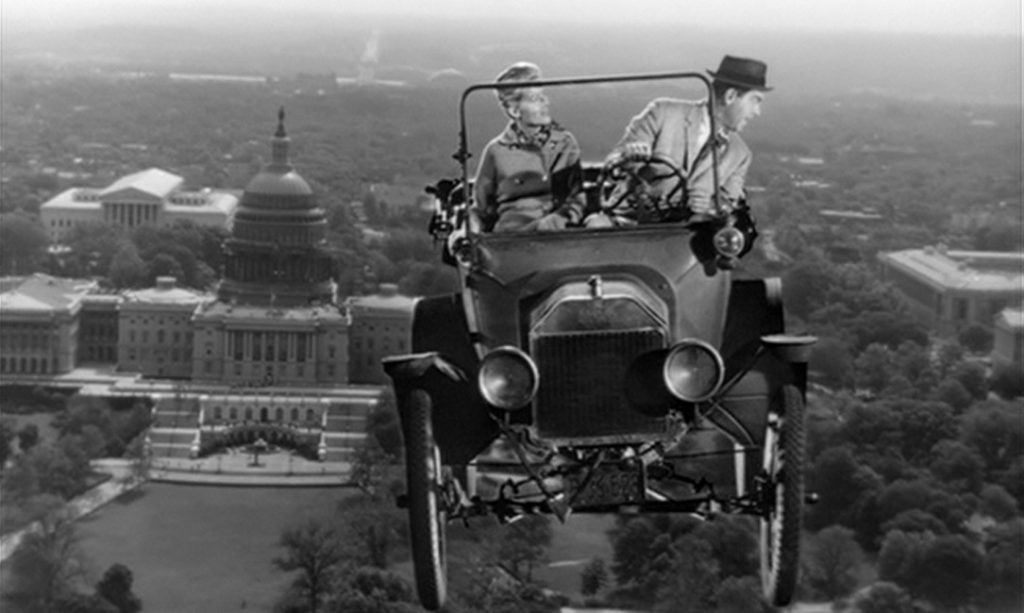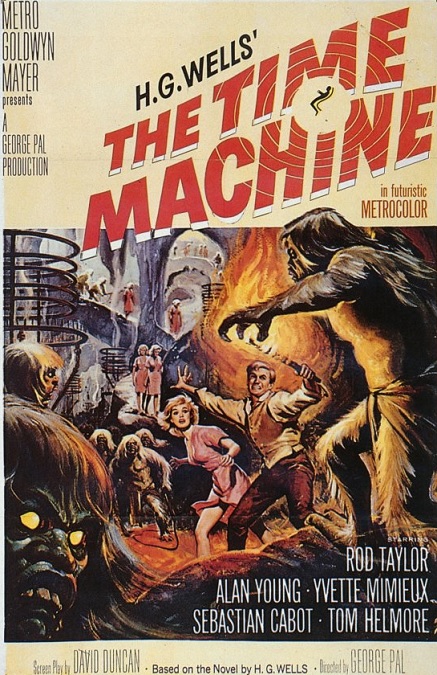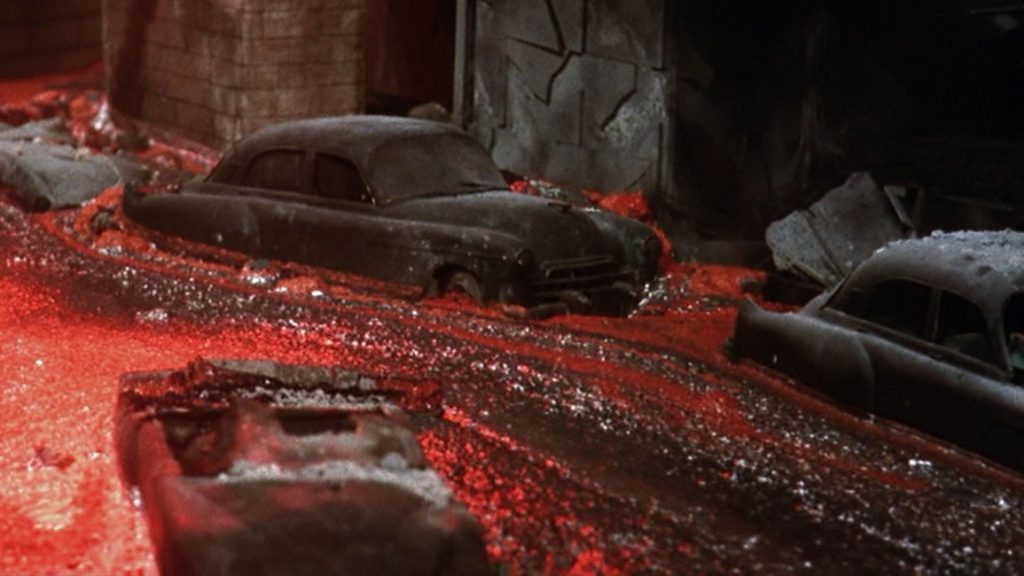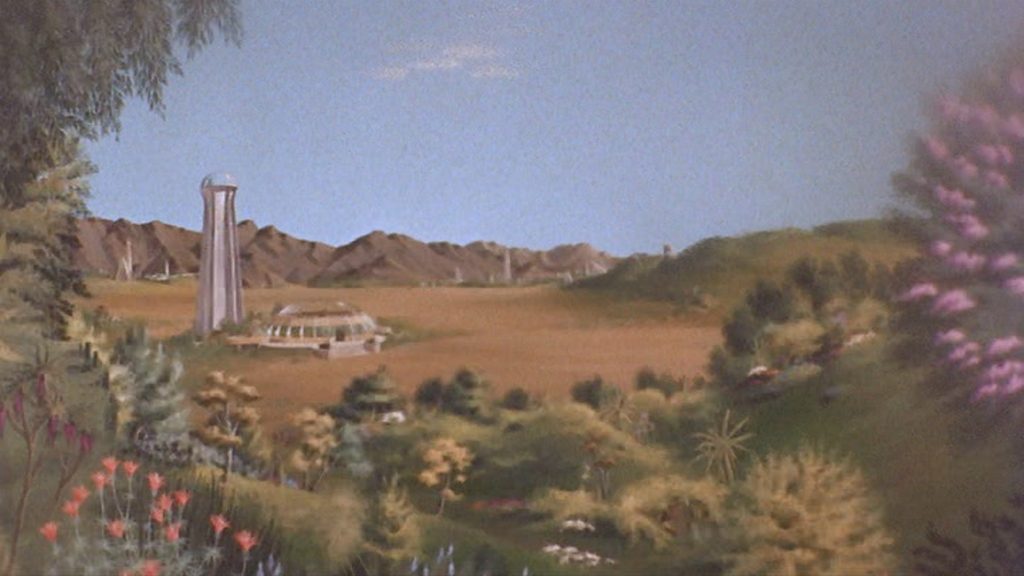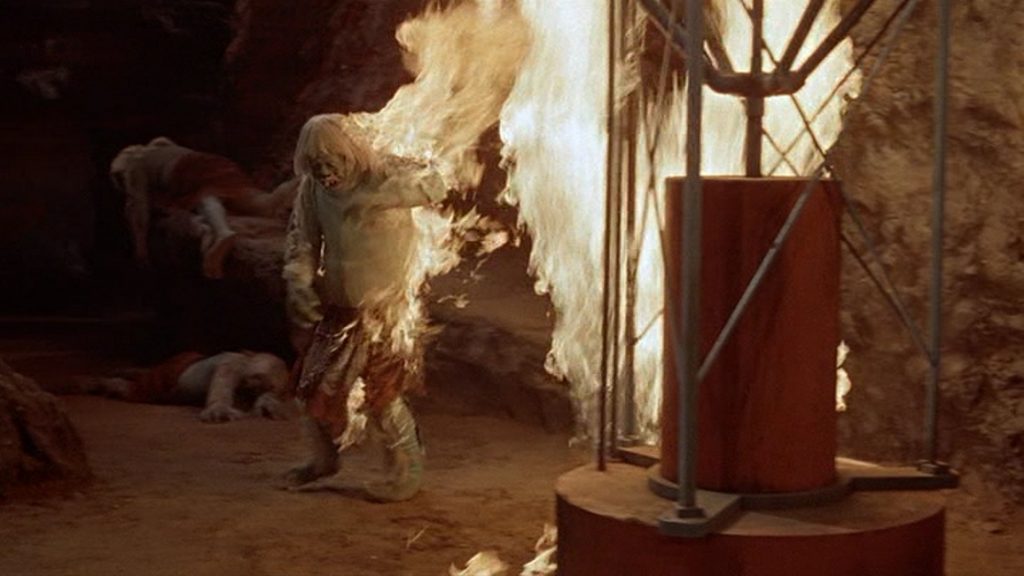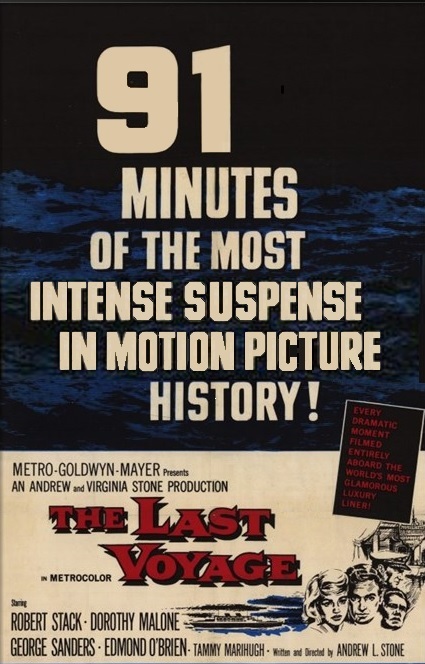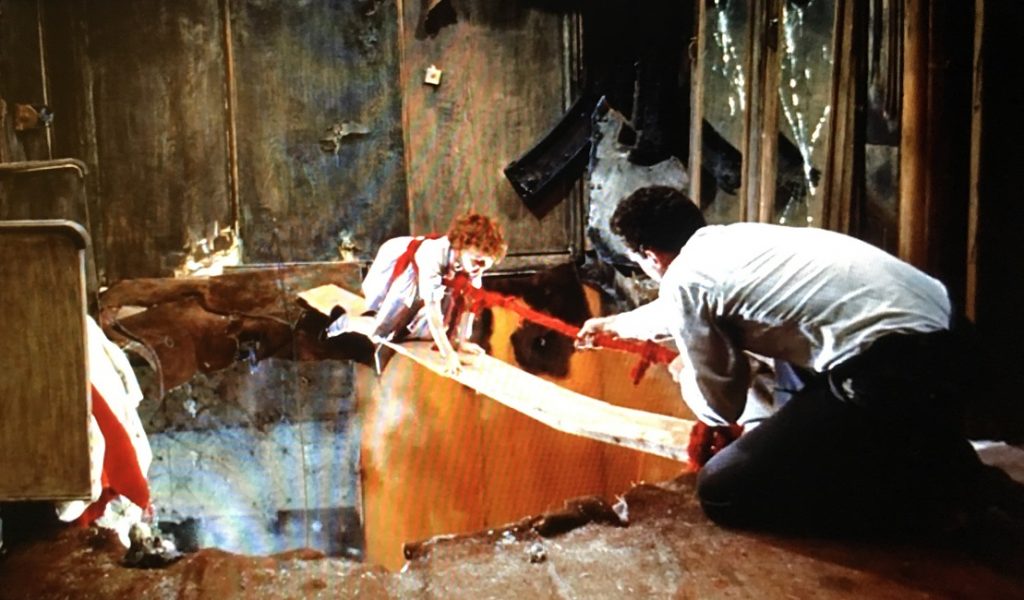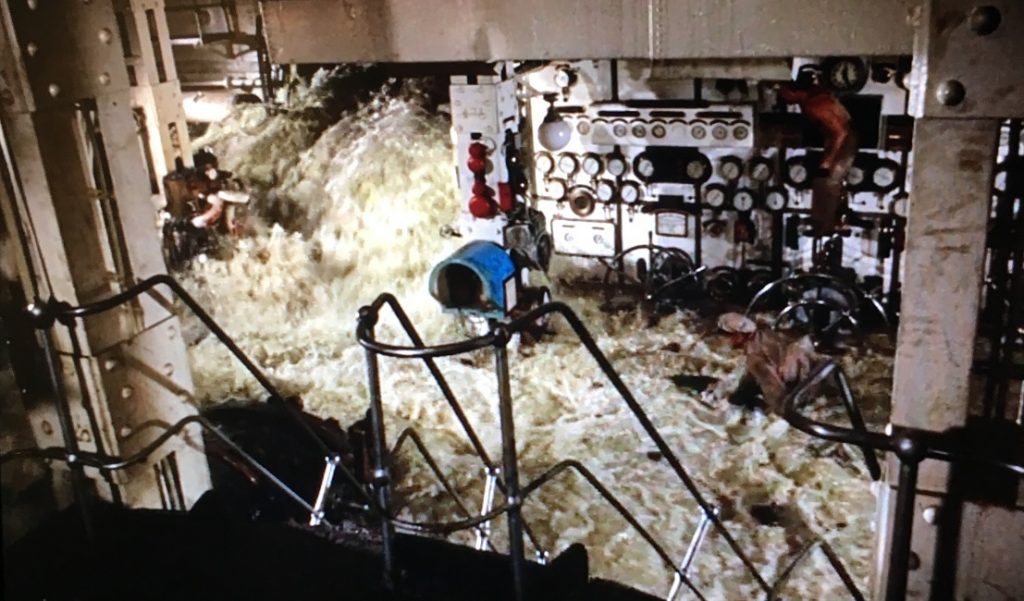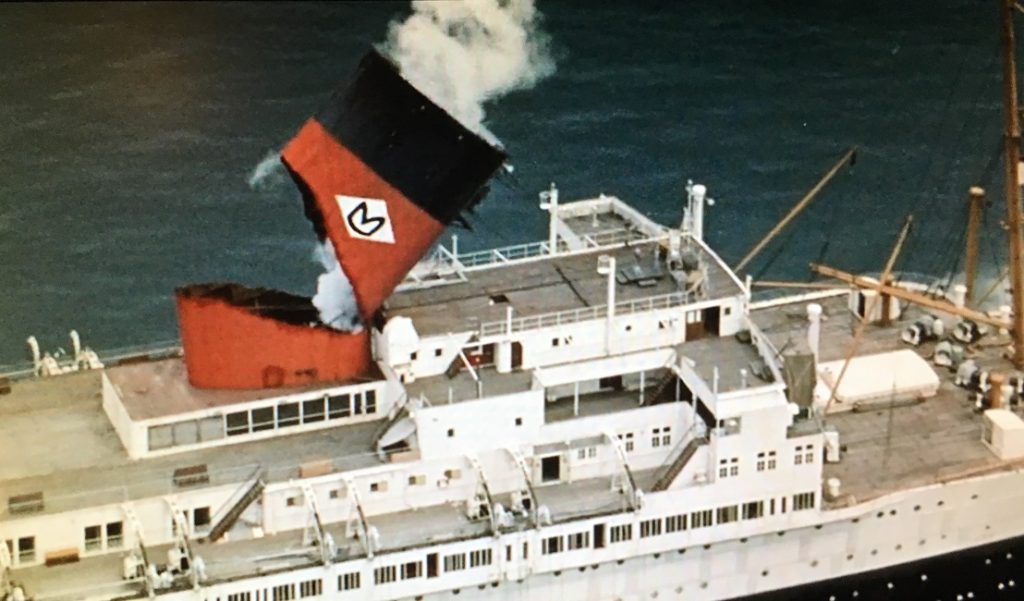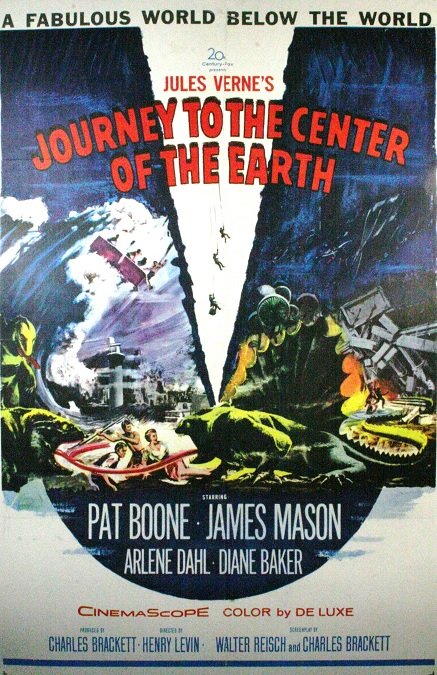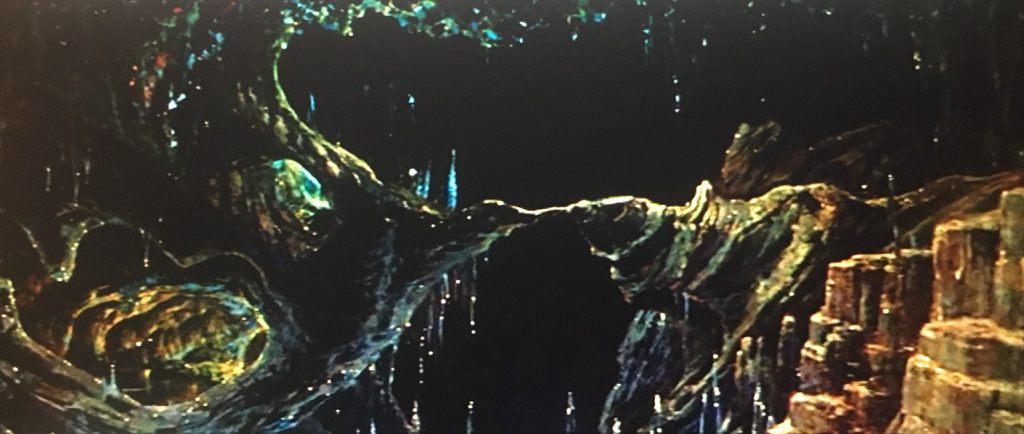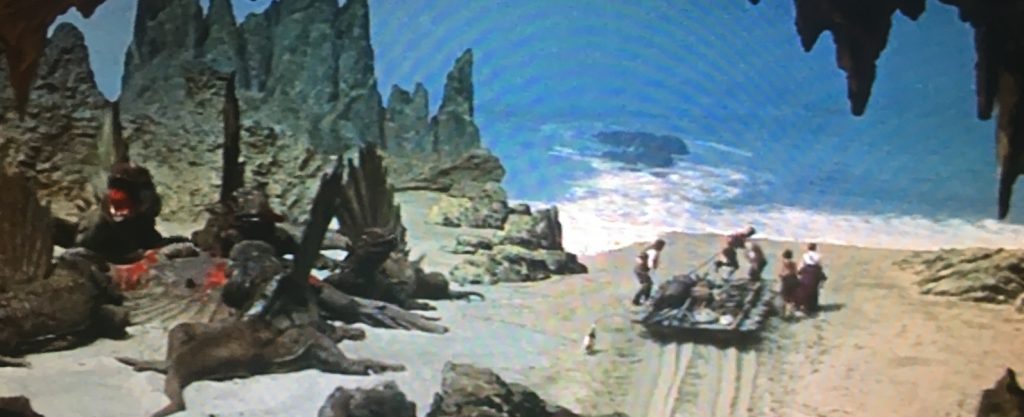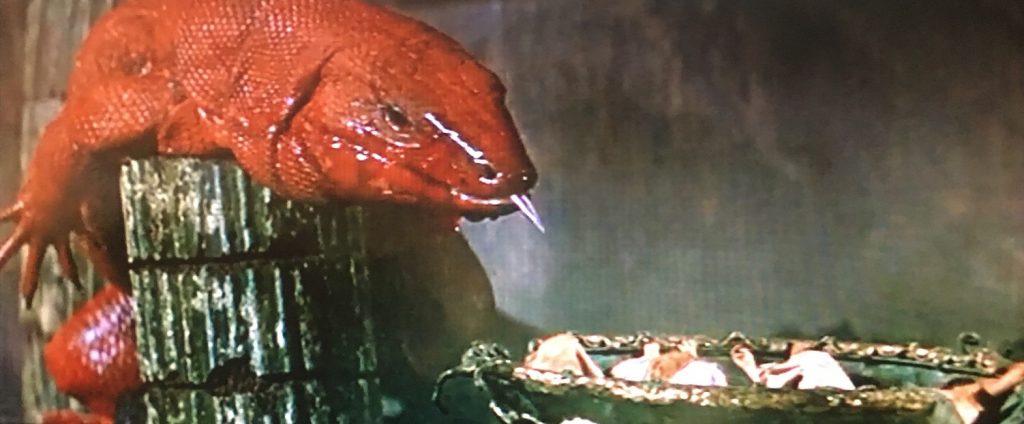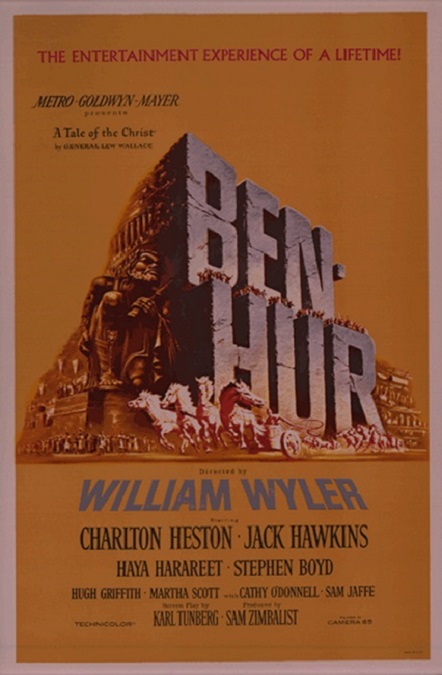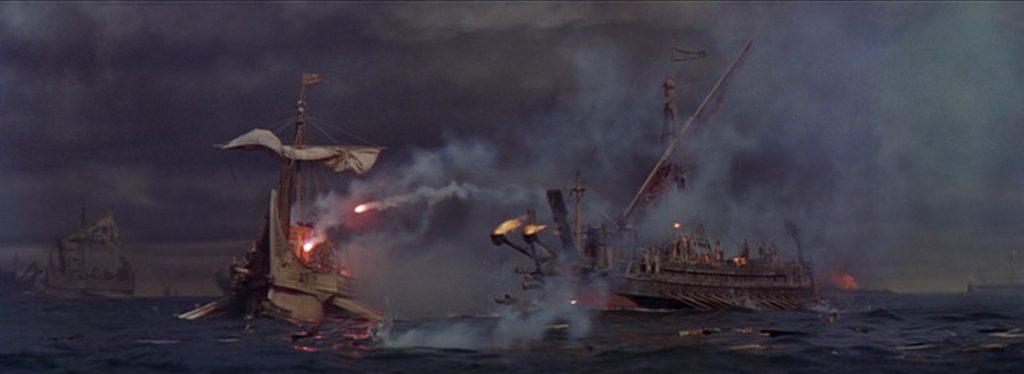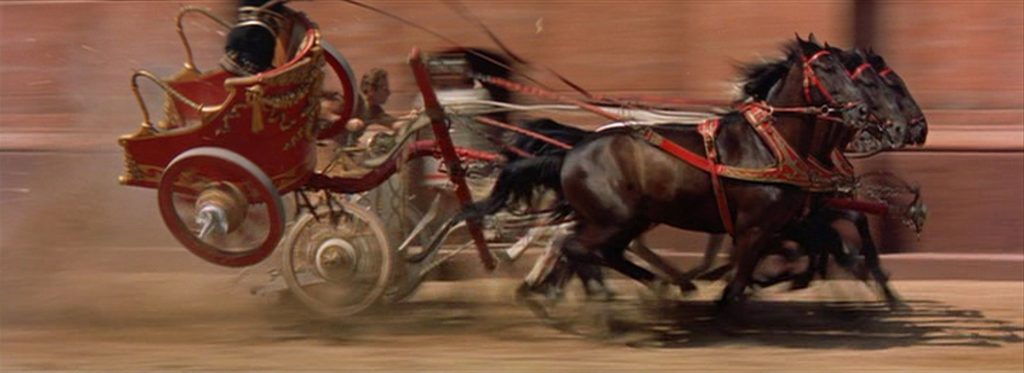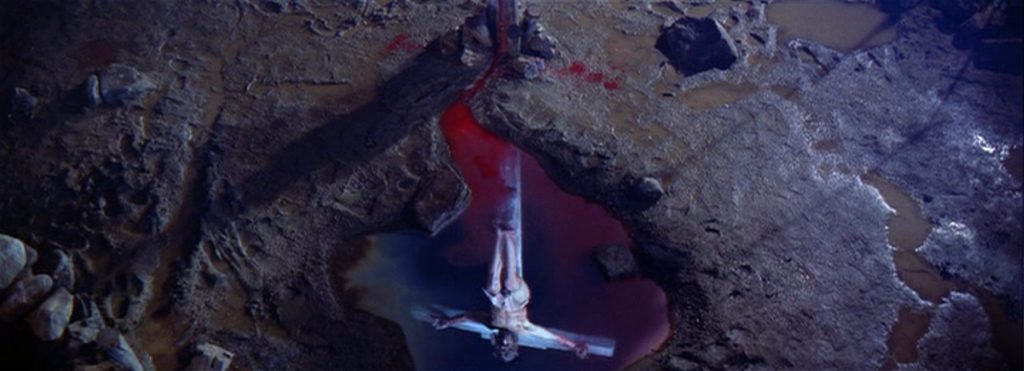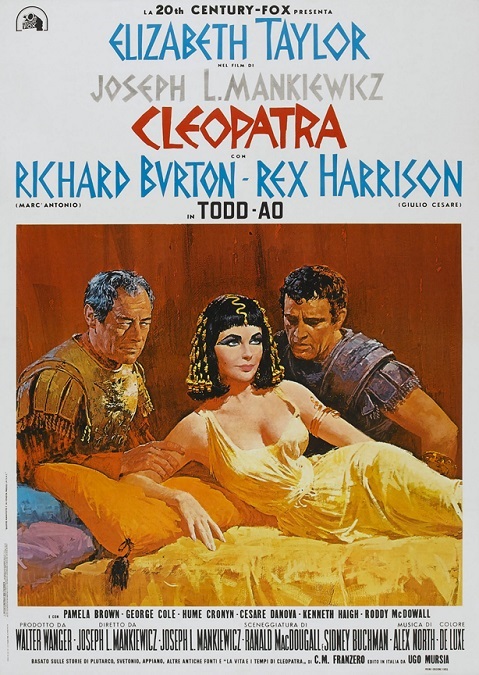
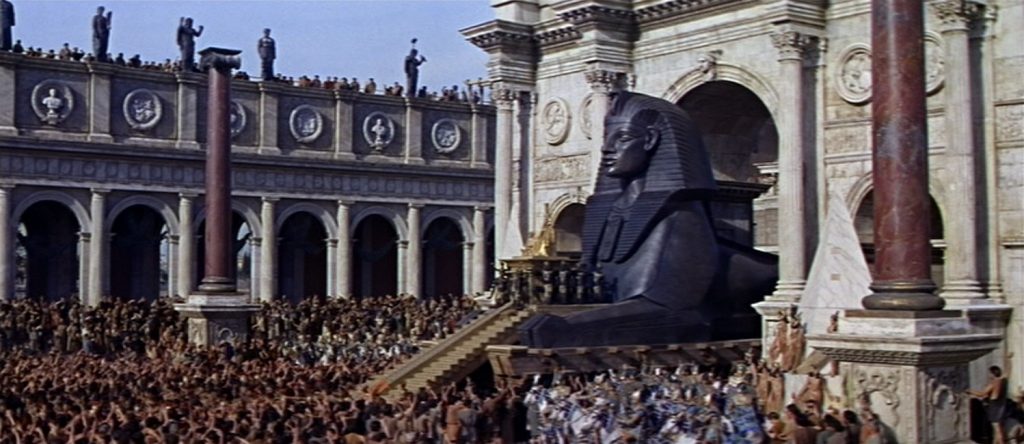
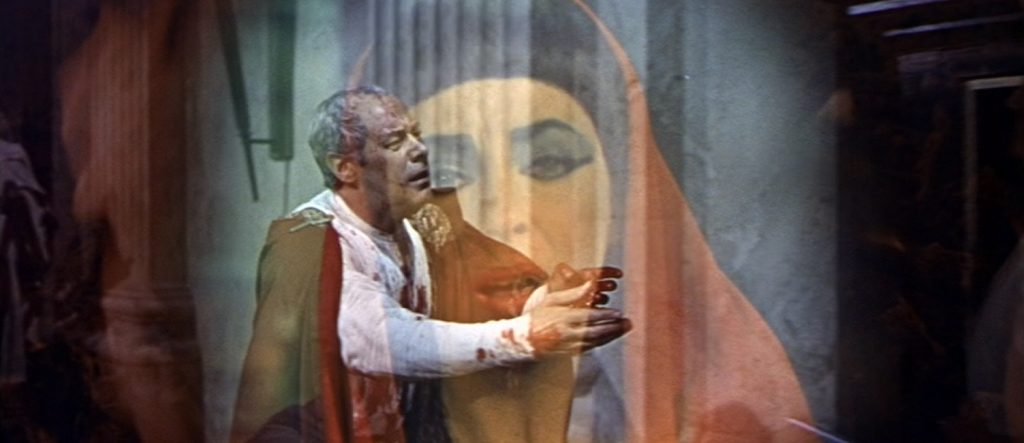
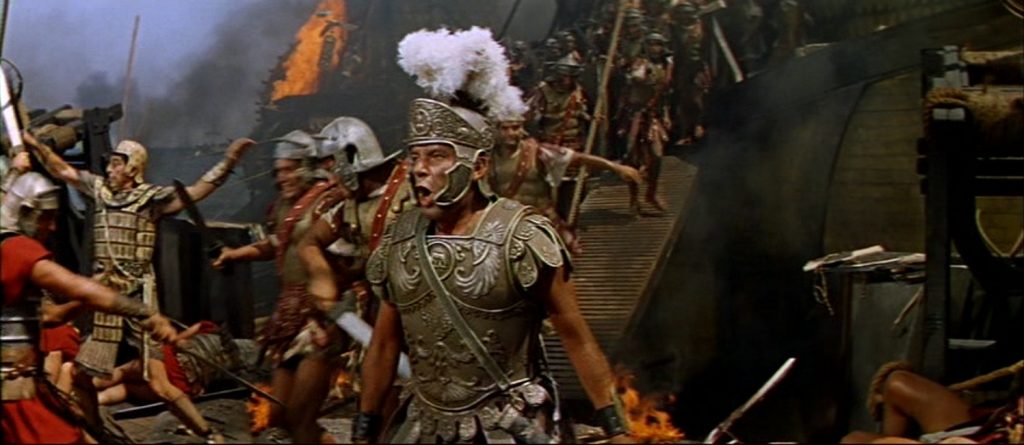
Cleopatra – 1963 (WINNER)

Sometimes it seems as if the academy voters are confusing production design with visual effects. Cleopatra didn’t seem to do anything innovative or creative, especially when compared to its competition, Alfred Hitchcock’s The Birds. This epic had some stunning visuals, but that was mostly due to the set and prop design, and the beautiful but terribly ridiculous costume design. In that regard, it beat Hitchcock, hands down. But its compositing, its blue-screen effects, its scale models, its matte paintings, its battles, and yes, even its grandeur were all old hat.
Now, that being said, once again, I’ll concede that the blue-screening very good. It continued to improve as the technique was perfected. The dark lines around the actors are pretty much gone by this point, making the illusion pretty seamless. Also, they seemed to be getting better at matching the lighting between the actors and the backgrounds, making them appear to actually be in the different environments. That’s not to say it was perfect. There were a few shots that literally stood out, making the two images appear to be separate. But for the most part, they were pretty good.
But as for the spectacle, it was pretty… well, spectacular. There was a grandness that, at times, matched other pseudo-historical dramas like Ben-Hur and The Ten Commandments. It was all part of that MGM formula for film success. Make everything big and make it all epic. Spare no expense in the sets and costumes. Make everything out to be larger than life, including the acting, and you’ll have a successful film. And darn if it didn’t work.
There were a few visual effects that were noteworthy, though nothing new or overly inventive. The burning of the Library of Alexandria was nice, and was followed by a short battle sequence that displayed the Roman Turtle tactic. But again, I would credit that to production design, not visual effects. The fires were good, but ultimately unimpressive. There was some mildly creative use of overlapping images during the scene where Cesar was assassinated, but those are directorial decisions, not special effects.
And then there was the naval battle. There were a few good shots of the ships using catapults to hurl flaming projectiles at each other, and as the fighting came to a close, there were a few burning ships sinking into the water. But again, it was nothing to write home about. Just look at some of the previous films nominated for Best Special Effects. The Sea Wolf, The Black Swan, That Hamilton Woman, and Ben-Hur all had comparable, if not better, battles at sea.
But Cleopatra took home the Oscar, so I must be missing something. I even spent several hours doing research on the internet, trying to find the reason for this win. However, every article I read either focused on the Elizabeth Taylor/Richard Burton affaire, or the film’s skyrocketing budget, neither of which is a special effect.
